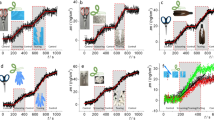Abstract
IN reply to Mr. Thomas D. Cope's letter in NATURE of January 21, it may be stated that he is correct in supposing that the best explanation of the streaks on the plaster he refers to is that they are due to the hot-air molecules driving the dust particles into contact with the plaster, and the colder the plaster the weaker is the power of the cold-air molecules next it to resist the deposition. This tendency of hot air to deposit its dust on cold surfaces can be seen in a very marked way in any house heated with hot water or steam. Wherever a hot pipe comes through a wall there will always be found a dirty vertical streak on the wall just above the hot pipe, caused by the stream of hot air rising from the pipe depositing its dust on the cold surface.
This is a preview of subscription content, access via your institution
Access options
Subscribe to this journal
Receive 51 print issues and online access
$199.00 per year
only $3.90 per issue
Buy this article
- Purchase on Springer Link
- Instant access to full article PDF
Prices may be subject to local taxes which are calculated during checkout
Similar content being viewed by others
Author information
Authors and Affiliations
Rights and permissions
About this article
Cite this article
AITKEN, J. The Cause of Streaks upon Lath and Plaster Walls. Nature 94, 615–616 (1915). https://doi.org/10.1038/094615c0
Issue Date:
DOI: https://doi.org/10.1038/094615c0
Comments
By submitting a comment you agree to abide by our Terms and Community Guidelines. If you find something abusive or that does not comply with our terms or guidelines please flag it as inappropriate.



